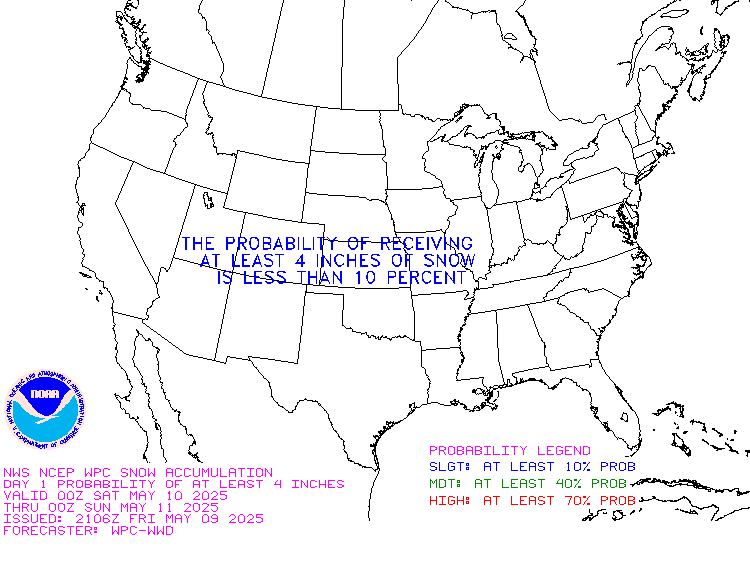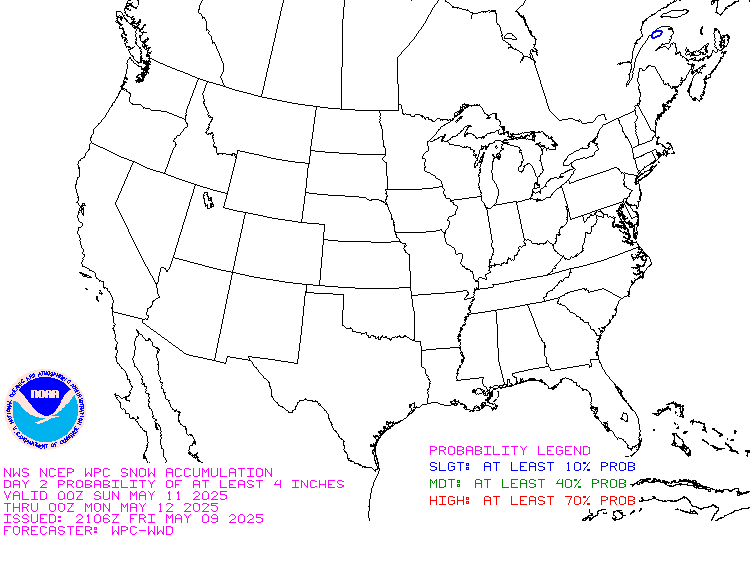This article focuses on what we are paying attention to in the next 48 to 72 hours. The article also includes weather maps for longer-term U.S. outlooks and a six-day World weather outlook which can be very useful for travelers.
First the highlights from the NWS.
Short Range Forecast Discussion
NWS Weather Prediction Center College Park MD
Thu Jan 18 2024
Valid 12Z Thu Jan 18 2024 – 12Z Sat Jan 20 2024…Heavy mountain snows for the Northwest/Rockies; additional ice over the
Columbia Basin……Bands of heavy lake-effect snow continue for the Great Lakes with
hazardous snow across the Midwest and Mid-Atlantic by Friday……Another Arctic blast expected late this week…
Please click on “Read More” below to access the full report issued today.
| Notices: The article on the Updated Outlook for January 2024 can be accessed HERE. What would you like to learn about? Please provide that to me via the comment section at the end of the article. |
Now more detail on the 48-Hour Forecast (It is a 48 to 72 Hour Forecast actually)
Daily weather maps. The Day 1 map updates twice a day and the Day 2 and 3 maps update only once a day. These maps update automatically. But if that does not happen, you can get updates by clicking HERE
TODAY (or late in the day the evening/overnight map will appear) (Key to surface fronts shown on maps and you will then also be able to insert a city name or zip code and get a local NWS forecast).
TOMORROW
NEXT DAY
This animation shows how things may play out over the next 60 hours. To update click here.
The NWS Climate Prediction Center’s: Watches, Warnings, and Advisories plus other information can be found HERE. We post at least one of those updates daily, sometimes both. The Highlights are shown in the lede paragraph of this article.
ATMOSPHERIC RIVERS
This tells us what is approaching the West Coast. Click HERE to update If I have not gotten around to doing the update. Here is some useful information about Atmospheric Rivers.
Continuation of the NWS Short Range Forecast. It is updated by NWS twice a day and these updates can be found here
Yet another swath of freezing rain and heavy mountain snowfall will
overtake portions of the Pacific Northwest as another storm system skirts
the coastline with stubborn cold air in place. The next round of heavy
freezing rain is forecast to develop later today and persist into Friday
over portions of the Cascades and Lower Columbia Basin, where upwards of a
quarter to half inch of ice is possible through Saturday morning with this
next wave. Accordingly, moderate to major potential winter storm impacts
are expected, including dangerous travel and power outages. This could
exasperate earlier damage from the significant icing over the last week.
Around the same time freezing rain creeps into the lower elevations,
another round of heavy mountain snowfall can also be expected higher up in
the Cascades, with snowfall rates exceeding 1″ an hour leading to snowfall
totals of 1-3 feet Saturday. Mountain passes (particularly in the
Cascades), will likely see a messy mix of heavy snow, rain, and freezing
rain through Friday which will make travel especially dangerous in these
areas. Along the immediate coastline in northwest Oregon and Washington,
precipitation will remain as rain, which could lead to localized flash
flooding as soils in the area are very saturated. By tomorrow, the
excessive rainfall threat will shift southward into northern California
with additional isolated flash flooding possible.Lake effect snow bands will continue downwind of the Great Lakes,
particularly Lakes Erie and Ontario where an additional foot is possible
through tomorrow morning. The focus for winter precipitation will shift
westward however as the next winter weather maker will spin up today over
the Mid-Mississippi Valley, with snow likely to spread from the
north-central Plains to the Midwest/Lower Great Lakes and the Mid-Atlantic
by Friday. Freezing rain is also a concern over this afternoon portions of
the Tennessee Valley today with shallow Arctic air on the heels of this
frontal system. Winter Storm Watches are also in effect across portions of
the central Appalachians in advance of the heavy snow and gusty winds
expected to arrive early Friday. Although in general significant
accumulations are not expected, the snow and freezing rain could still
create hazardous driving conditions, and a stretch of Winter Weather
Advisories are noted over the Mid-Mississippi Valley eastward into the
Mid-Atlantic.The Southern Plains and Gulf Coast can enjoy a short lived break from the
cold on today as temperatures rebound into the 60s and 70s south and west
of the ArkLaTex. This will be short lived however as another frigid Arctic
airmass will once again overspread the eastern half of the Lower 48
through this weekend. Although not as extreme as the first wave early this
week, daytime highs on Friday across the Plains into the Mississippi
Valley could be 20-30 degrees below normal with a few low temperature
records possible, aside from the wind making it feel even colder.
Learn about wave patterns HERE.
Below is the current five-day cumulative forecast of precipitation (Updates can be found HERE)
Ski SnowReports
New Feature – Ski Reports. It is difficult to find reports that auto-update on-screen (and they are very long) but these links will get you to them – If you have additional suggestions make them in the comments section after every Econcurrents Article and we may add those links. We will try to not have too much overlap as that can add to the confusion.
Snow Forecasts. And remember this shows natural snow. Ski resorts also make their own snow.
Day 1

Day 2

Additional snow information can be found here, here, and here. The second link provides animations.
Now we look at Intermediate-Term “Outlook” maps for three time periods. Days 6 – 10, Days 8 – 14, and Weeks 3 and 4. An outlook differs from a forecast based on how NOAA uses these terms in that an “outlook” presents information as deviation from normal and the likelihood of these deviations.
Below are the links to obtain updates and additional information. They are particularly useful if you happen to be reading this article significantly later than when it was published. I always try to provide readers with the source of the information in my articles.
| Days 6 – 10 (shown in Row 1) | Days 8 – 14 (Shown in Row 2) | Weeks 3 and 4 (Shown in Row 3 but updates only on Fridays) |
| https://www.cpc.ncep.noaa. gov/products/predictions/610day/ | https://www.cpc.ncep .noaa.gov/products/predictions/814day/ | https://www.cpc.ncep.noaa.gov/products/predictions/WK34/ |
Showing the actual maps. They should now update automatically. The Week 3 – 4 Outlook only updates on Fridays. So below is what I call the Intermediate-term outlook. On Fridays, it extends out 28 Days. That declines day by day so on Thursday it only looks out 22 days until the next day when the Week 3 – 4 Outlook is updated and this extends the outlook by one additional week.
| 6–
10
|
|
|
| 8–
14 |
|
|
| 3–
4 |
|
|
HAZARDS OUTLOOKS
Click here for the latest complete Day 3 -7 Hazards forecast which updates only on weekdays. Once a week probably Monday or Tuesday I will update the images. I provided the link for readers to get daily updates on weekdays. Use your own judgment to decide if you need to update these images. I update almost all the images Friday Night for the weekend edition of this Weather Report. So normally readers do not need to update these images but if the weather is changing quickly you may want to.
Temperature month to date can be found at https://hprcc.unl.edu/products/maps/acis/MonthTDeptUS.png
Precipitation month to date can be found at https://hprcc.unl.edu/products/maps/acis /MonthPNormUS.png
World Forecast
Below are the Day 1 -3 and 4-6 forecasts for temperature and precipitation. Updates and much additional information can be obtained HERE
World Temperature Anomalies
World Accumulated Precipitation
This information is provided by the University of Maine. They draw upon many different sources. There is a lot of information available at the link provided. I have just provided two useful forecasts. There are probably over a hundred different forecasts available from this source.
Worldwide Tropical Forecast (This is a NOAA Product)
This graphic updates on Tuesdays) If it has not been updated, you can get the update by clicking here Readers will only have to do that if they are reading this article much later than the date of it being published.
Information on Tropical Storms can be found HERE. Western Pacific information can be found HERE.
–
| I hope you found this article interesting and useful. |
–
